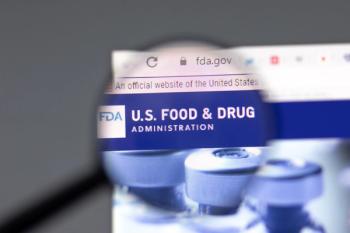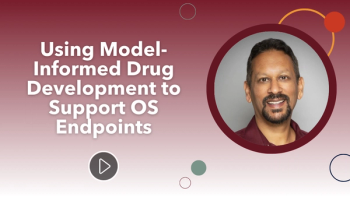
- Applied Clinical Trials-04-01-2010
- Volume 0
- Issue 0
Regulatory Science to Inform Trial Design
FDA Commissioner Hamburg seeks resources to build agency scientific expertise & new research methods.
The Food and Drug Administration wants more respect, and less second-guessing of its regulatory actions. Its strategy is to build up in-house scientific expertise and to improve methods for evaluating medical products so that its decision to approve a drug for market or to require postmarketing safety studies don't draw criticism on the political front or from experts with differing opinions.
Jill Wechsler
Strengthening FDA's science base has been a leading theme for Commissioner Margaret Hamburg since taking the agency's helm a year ago. She has gained modest recognition of its importance from the Obama administration, which earmarked some money for a small science program in the 2011 budget plan, and from the National Institutes of Health (NIH), which is funding research on ways to improve the science of evaluating new drug safety and efficacy. Up until now, the field of regulatory science has not received the resources, or the intellectual power, that it really needs and deserves, Hamburg stated in announcing the FDA-NIH collaboration in February. "We have allowed the arm of regulatory science to become weak and under-developed," she commented. If not fixed, "instead of pulling us into an exalted future, we will row in circles."
Hamburg warned that if this imbalance persists, "we will not realize all the potential of the revolution in biomedical science." She and others are dismayed that the nation's huge investment in biomedical research, epitomized by decoding the human genome, has not translated into important new treatments for patients. In order for that to happen, Hamburg stated at a February meeting of the Personalized Medicine Coalition (PMC) that biomedical discoveries "must be married to a robust investment in regulatory science." By that she means developing new tools and standards to assess medical product safety, effectiveness, potency, quality, and performance. Priority projects could involve setting standards for novel cell-based therapies, developing reagents to test flu vaccine potency, or implementing strategies for screening compounds for serious adverse events.
More efficient trials
An important component of this initiative is to improve the design of clinical trials to better assess product safety and efficacy and to make the research process more efficient and less costly. Hamburg notes that validating surrogate endpoints can reduce the time and cost of clinical trials and that FDA needs to provide more guidance on study design; clinical trials for rare disease treatments, for example, should involve fewer patients and permit more flexible endpoints.
Regulatory science is key to advancing personalized medicine by providing the scientific community with a better understanding of the genetics of drug metabolism and which patients may be at risk for adverse consequences from a particular drug, as well as those most likely to benefit. The discovery of genetic markers has led to labeling that will prevent use of certain colon cancer drugs on those patients with the K-RAS mutation who are unlikely to benefit. And biomarker validation projects have produced new rodent assays that can pick up early signs of kidney toxicity. Such efforts can support smaller studies that enroll patients most likely to respond to treatment.
Hamburg promised to issue long-awaited draft guidance on biomarker qualification this year. Another guidance on the codevelopment of drugs and diagnostics will clarify FDA expectations for clinical trials to show that a test is accurate and can inform clinical decisions. Related to this, FDA is working internally to gain agreement across FDA centers about the kind of evidence needed to rely on a test result to shape a drug trial, or product approval or relabeling.
Leverage and collaboration
Because the FDA has very limited resources to expand its scientific capabilities, Hamburg is looking for assistance from fellow government agencies and from the industry. This past February, she and NIH Director Francis Collins joined Health and Human Services (HHS) Secretary Kathleen Sebelius to announce a collaborative effort to promote regulatory science so that patients will gain access sooner to safer therapies and treatments.
The three-year $6.75 million program is tiny by NIH standards, but won praise as an important first step toward developing new methods and approaches for biomedical product development. NIH is providing $2 million and FDA $250,000 each year, which will support two or three grants a year to academic researchers exploring new models and technologies related to evaluating the safety and efficacy of drugs, biologics, and medical devices throughout the product lifecycle.
To define the research agenda and to generate interest in regulatory science across the academic research community, Collins and Hamburg will co-chair a Joint Leadership Council composed of leading scientists from both agencies. The panel will encourage NIH research directors to consider regulatory issues in building their research programs, and also seek to integrate the latest science into FDA's review process. The panel is holding a public meeting this spring to gain input on research priorities and on how NIH and FDA can work better together.
Many of these issues were examined more fully at a workshop sponsored by the Institute of Medicine (IOM) Drug Forum in late February. The group has been discussing the need to improve FDA's science base since an IOM 2007 report on drug safety highlighted the gap in agency expertise. Hamburg noted that FDA's partnership with NIH may provide a model for similar relationships with other government agencies, such as the National Institute of Science & Technology (NIST) and HHS' Biomedical Advanced Research & Development Authority (BARDA).
Barely breaking even
Despite Hamburg's vigorous campaign to strengthen science at FDA, the path forward is peppered with obstacles. First is limited resources. The Obama administration's FDA budget plan for 2011 provides $25 million for an Advancing Regulatory Science initiative, an amount that reflects the overall squeeze on FDA funding for next year. Only by collecting $1.5 billion in user fees does FDA's total budget reach the $4 billion total and the 25% increase highlighted by the White House. Just looking at the 6% rise in appropriations, FDA barely breaks even, explained consultant Steven Grossman.
Moreover, much of that $25 million is targeted to specific projects, such as improving FDA expertise in nanotechnology and stem cell research, and setting standards for biosimilars and medical device technology. FDA Chief Scientist Jesse Goodman would have $3 million to oversee initiatives to spur research and collaboration. But there's a paltry $4.5 million for FDA's Critical Path Initiative, which has been struggling to support biomarker validation collaborations and to modernize clinical research.
The proposed amount will enable FDA to bring in a handful of scientists to bolster these initiatives, improve internal staff training programs, and provide some support for research projects. There is talk of forming a network of academic Centers of Excellence and an independent research entity to help FDA answer tricky questions about product efficacy or safety, but those require much more money to move off the back burner. HHS Deputy Secretary Bill Corr expressed administration commitment to these efforts, describing the admittedly modest funding of science at FDA as a "foundation for more to come."
However, some important policy makers are skeptical that FDA needs more resources to do its job. Rep. Rosa DeLauro (D-Conn), chairman of the House Appropriations subcommittee that oversees FDA funding, told the IOM workshop that "FDA has many problems that won't be solved by throwing money at it." DeLauro is unhappy that drug safety issues continue to erupt and that FDA has trouble resolving administrative issues.
Support for countermeasures
One optimistic note, observed Eli Lilly Vice President Gail Cassell, is that other government agencies such as NIH and BARDA are becoming more aware of FDA's importance in facilitating access to new therapies and to countermeasures to protect against biological threats. Cassell recently chaired another IOM meeting on strategies for developing medical products for public health purposes that examined FDA's critical role in facilitating access to emergency treatments and in evaluating innovative clinical trial designs for products with low commercial viability.
Hamburg acknowledged that current initiatives don't provide enough money to do all that needs to be done, "but it's a start." At a minimum, the commissioner hopes to systematize how FDA addresses regulatory science within the agency and to expand collaborations with external partners. The larger task of restoring the confidence of policy makers and the American people in FDA requires sustained funding and autonomy to "do our work" without being "buffeted by outside forces."
Even small funding for regulatory science will draw the attention of academia, noted New England Journal of Medicine Editor Jeffrey Drazen. And, he added, it may help get the politicians off of FDA's back.
Jill Wechsler is the Washington editor of Applied Clinical Trials, (301) 656-4634
Articles in this issue
over 15 years ago
Applied Clinical Trials Digital Edition - April 2010over 15 years ago
Alzheimer's by Phaseover 15 years ago
The Deeper Data Debateover 15 years ago
The Upfront Cost Hurdle of EDCover 15 years ago
Data Integration in the Age of Global Trialsover 15 years ago
Memories and Musings About Modelsover 15 years ago
Internet Recruitmentover 15 years ago
The Next Step for EDCover 15 years ago
Increasing Study Sensitivity in Early Trialsover 15 years ago
The EU Directive Really Doesn't Work!Newsletter
Stay current in clinical research with Applied Clinical Trials, providing expert insights, regulatory updates, and practical strategies for successful clinical trial design and execution.






.png)



.png)



.png)
.png)
